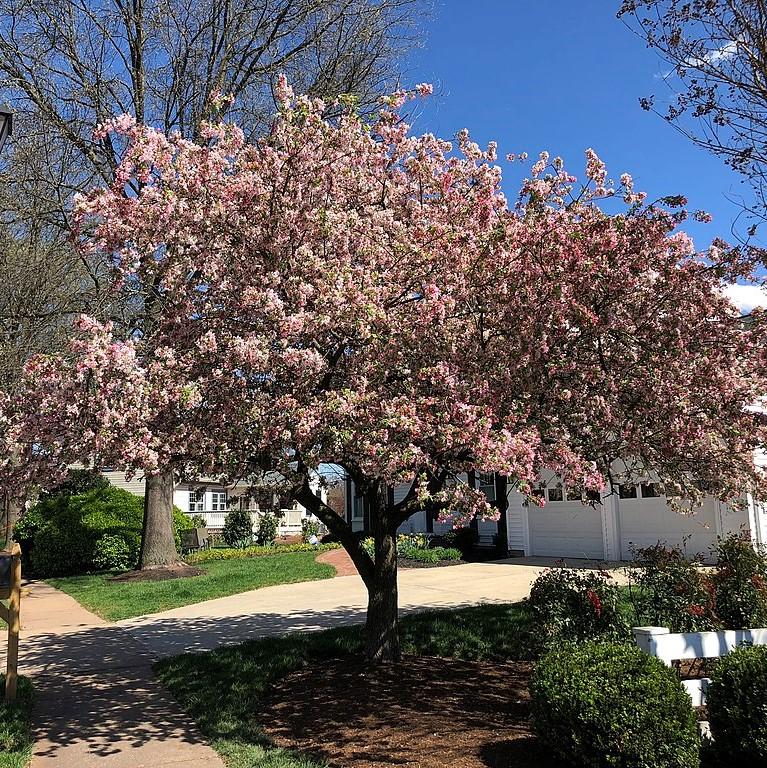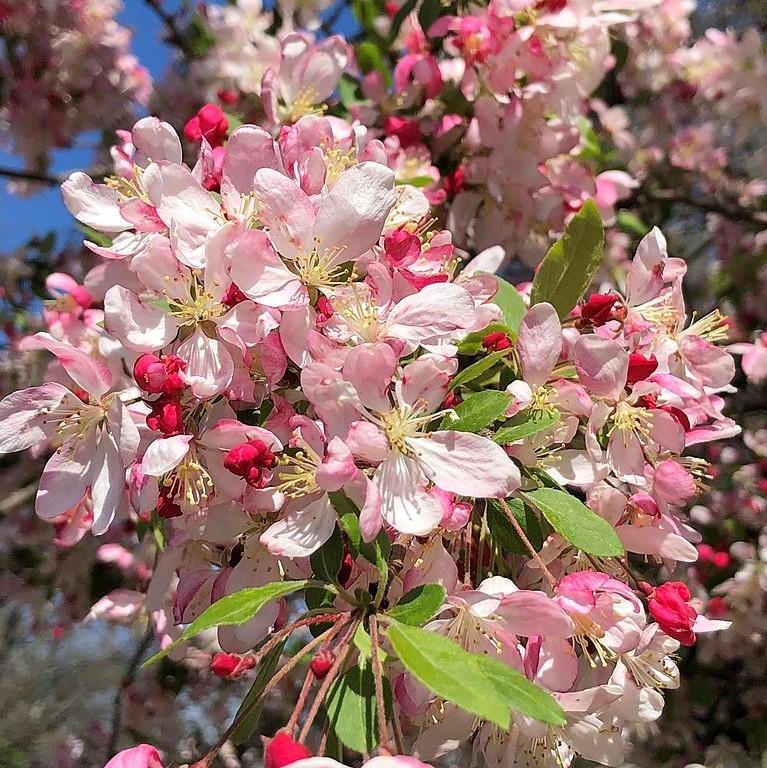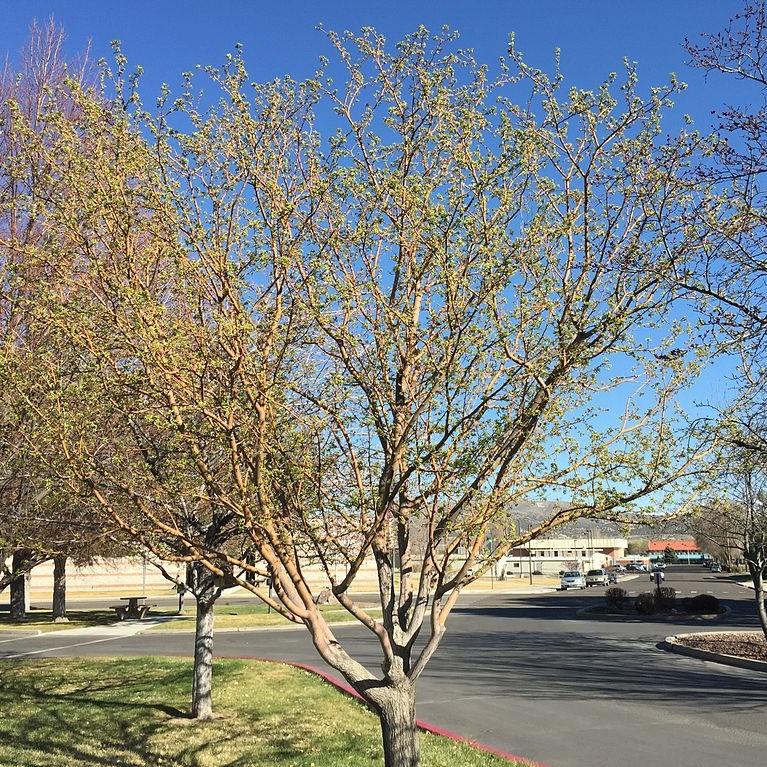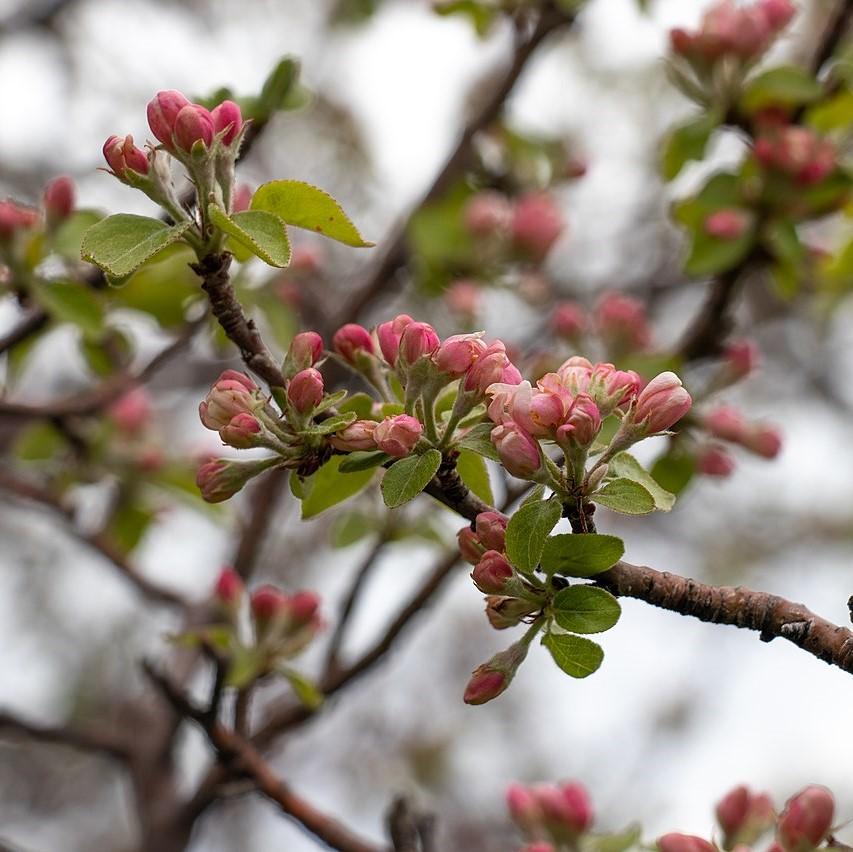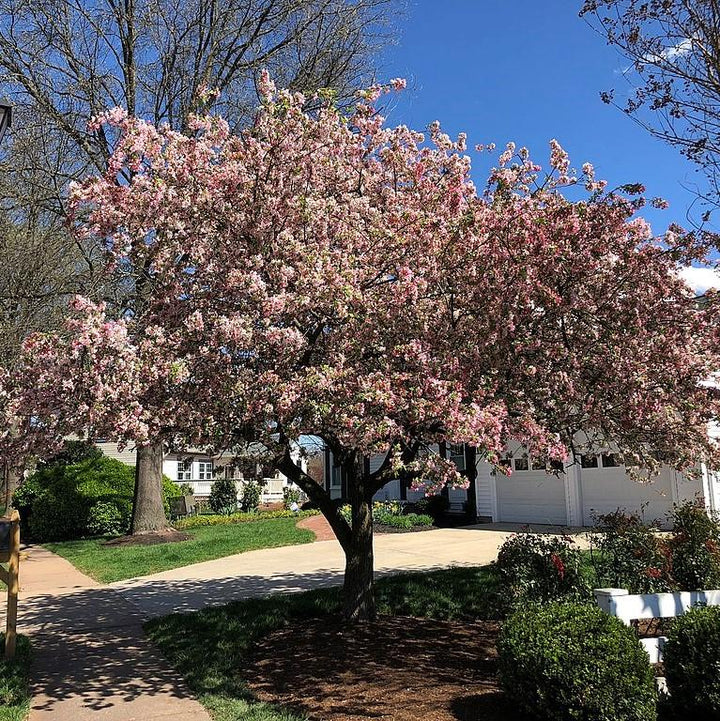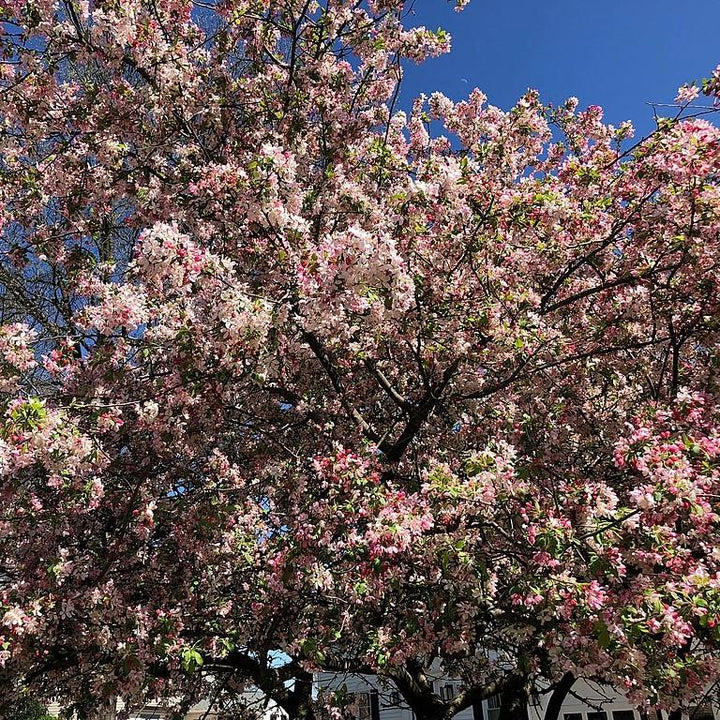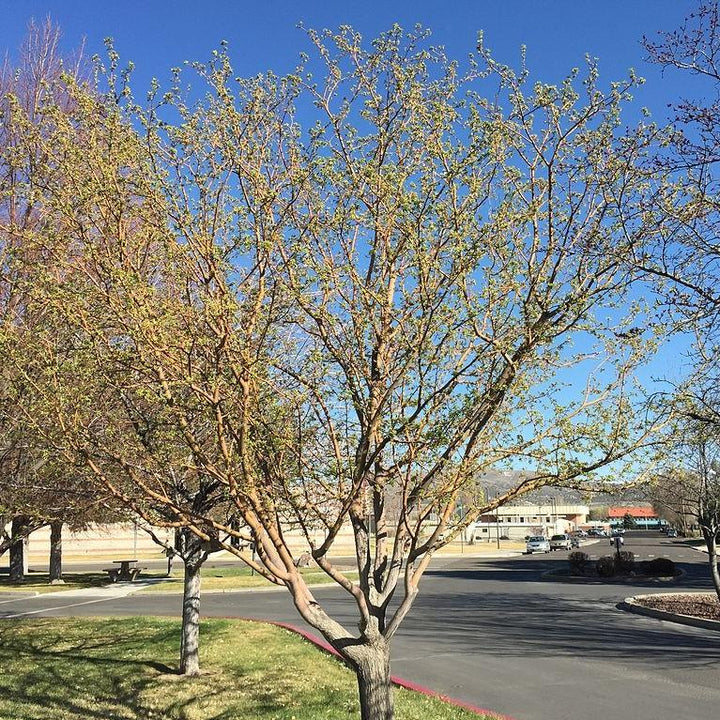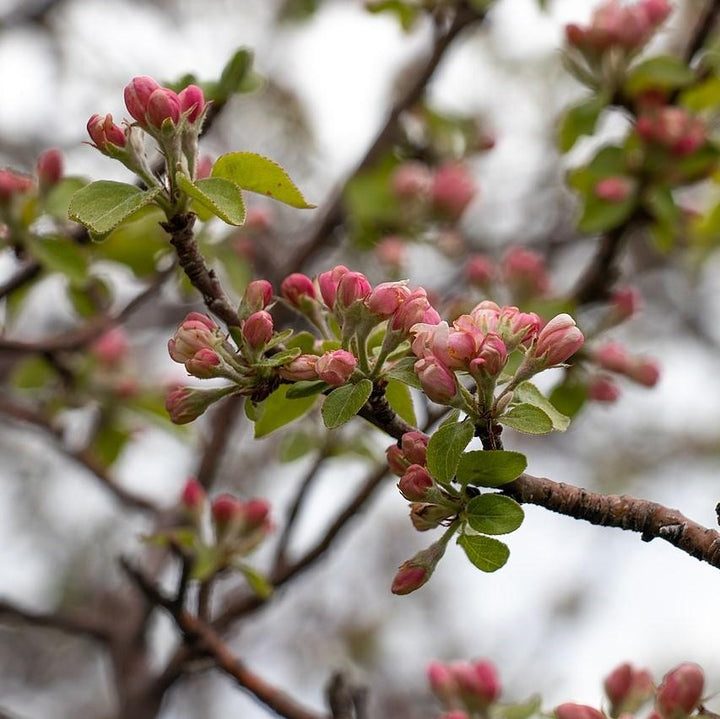Southern Crabapple
Malus angustifolia
-
We currently have 0 available.
- Coming Soon
- Locally Grown
A bare-root seedling is a young plant that is sold and
transported without soil or a container, only during the dormant season. These
seedlings are usually shipped without any soil or potting medium around them.
They are a common way to establish trees and shrubs. Here are some key
characteristics of bare-root seedlings:
No Soil or Container: As the name suggests, bare-root
seedlings are devoid of soil or any form of potting medium. The roots of the
plant are without soil and are typically wrapped in a plastic liner to prevent
them from drying out during transportation.
Dormant Season: Bare-root seedlings are typically available
and shipped during the plant's dormant season, which is usually in late fall through
winter. This is when the plant is not actively growing, making it easier to
handle and transport.
Easy Handling: Because they lack soil and containers,
bare-root seedlings are lightweight and easy to handle. This also allows them
to be shipped using UPS and FedEx ground services.
Planting a bare-root seedling is a straightforward process
if you follow the right steps. Here's a step-by-step guide on how to plant a
bare-root seedling:
Materials Needed:
- Bare-root seedling
- Shovel or spade
- Watering can or hose
- Organic compost (optional)
- Mulch (optional)
Steps:
Prepare the Site: Choose a suitable planting location making
sure the area is free from weeds and debris.
Dig a Hole: Use a shovel or spade to dig a hole that is wide
enough to accommodate the spread-out roots of the seedling and deep enough to
allow the roots to be positioned at their natural depth. The exact dimensions
of the hole will depend on the size of the root system, but a typical depth for
most bare-root seedlings is about as deep as the roots and wide enough to allow
for proper root spreading.
Soak the Roots: Before planting, it's a good idea to soak
the bare-root seedling's roots in a bucket of water for a few hours. This will
help rehydrate the roots and reduce transplant shock.
Position the Seedling: Place the seedling in the center of
the hole, ensuring that the roots are spread out and not bent or cramped. The
crown (the point where the stem meets the roots) should be at or slightly above
ground level.
Fill the Hole: Backfill the hole with soil, packing it gently
as you go to eliminate air pockets. Ensure that the soil is in contact with the
roots. If you have improved your soil with organic compost, you can mix some of
it with the backfill soil.
Water Thoroughly: After planting, water the seedling
thoroughly to settle the soil and provide moisture to the roots. Keep the soil
consistently moist in the weeks following planting, but avoid overwatering, as
this can lead to root rot.
Apply Mulch (Optional): To conserve moisture and control
weeds, you can apply a layer of mulch around the base of the seedling. However,
be sure to keep the mulch away from the stem to prevent moisture-related
issues.
Stake If Necessary: If your seedling is tall and likely to
be top-heavy or subjected to strong winds, you can stake it to provide support.
Use soft ties to secure the tree to the stake, allowing some flexibility for
natural movement.
Monitor and Care: Regularly monitor the newly planted
seedling for signs of stress, such as wilting or yellowing leaves. Keep up with
a consistent watering schedule and consider adding fertilizer or nutrients as
needed based on soil tests and plant requirements.
Protection: If planting during the winter, consider
protecting the seedling with a winter wrap or tree guard to shield it from
harsh weather.
-
Southern Crabapple trees typically reach a height of 15 to 30 feet (4.5 to 9 meters) and have a rounded or irregular crown. The leaves are simple, alternate, and have a serrated edge. They are typically dark green in color and turn yellow or reddish in the fall. The tree produces small, fragrant white or pink flowers in the spring, followed by small, round fruit that is about 1/2 inch in diameter. The fruit is usually green or yellow and can persist on the tree into the winter.
-
Habitat: Southern Crabapple trees are commonly found in wetland areas, such as swamps, floodplains, and along streams. They prefer moist, well-drained soils and can tolerate both full sun and partial shade.
-
Wildlife Value: The fruit of the Southern Crabapple tree is an important food source for various wildlife species. Birds, such as cedar waxwings and robins, feed on the fruit, while deer and other mammals may browse on the twigs and foliage. The tree also provides cover and nesting sites for birds.
|
Type: |
Tree |
|
Origins: |
Southeast N. America; GA Native |
|
Height: |
20' - 30' |
|
Spread: |
20’ - 25' |
|
Spacing: |
20' |
|
USDA Hardiness Zone: |
6 - 9 |
|
Culture: |
Full Sun |
|
Bloom Color: |
Pink |
|
Season of Interest: |
Spring, Fall |
MAINTENANCE NEEDS: High Maintenance. Water Regularly. Potential issues include apple scab, cedar apple rust, fire blight, leaf spot and and powdery mildew. Possible pests are aphids, maggots, boreres, and spider mites. Most commercially available Apples are grafted onto their rootstock, resulting in dwarf (8-10ft), Semi-dwarf (12-15ft) or standard tree heights all with full sized fruits. Ask the provider the rootstock classification for estimated size. Dwarf stock is easier to maintain and produces fruit at an earlier age.
LANDSCAPE USES: Accents or Group Plantings, Borders, Wildlife Gardens, Shade Tree, Edible Garden, and Container.
COMPANION PLANTS: Apple, Shasta Daisy, Bugleweed
IMAGES: Famartin, 2020-03-30 14 38 15 A crabapple with light pink flowers along Dairy Lou Drive in the Franklin Farm section of Oak Hill, Fairfax County, Virginia, CC BY-SA 4.0, (2) Famartin, 2020-03-30 14 38 23 Light pink flowers on a crabapple along Dairy Lou Drive in the Franklin Farm section of Oak Hill, Fairfax County, Virginia, CC BY-SA 4.0, (3) Famartin, 2020-03-30 14 38 32 Light pink flowers on a crabapple along Dairy Lou Drive in the Franklin Farm section of Oak Hill, Fairfax County, Virginia, CC BY-SA 4.0, (4) Famartin, 2015-03-27 16 05 32 Crabapple beginning to green up at Great Basin College in Elko, Nevada, CC BY-SA 4.0, (5) Soghomon Matevosyan, .Ծաղիկ 252, CC BY-SA 4.0
* As plants have ranges in appearance they may not appear as the images shown.


